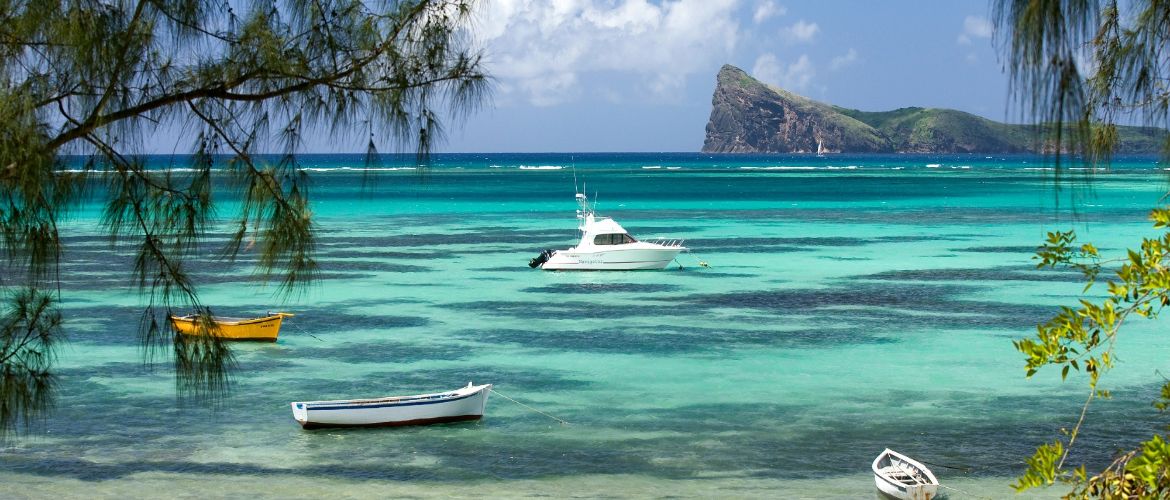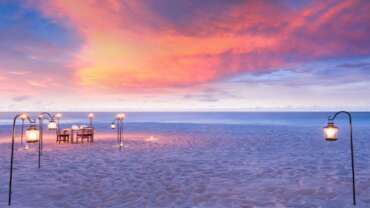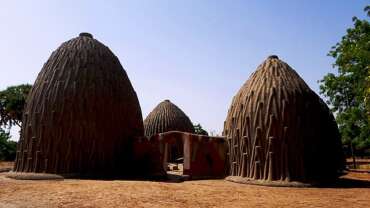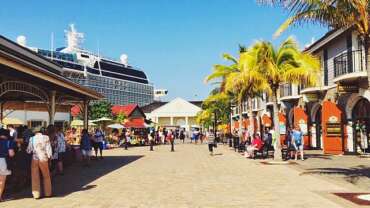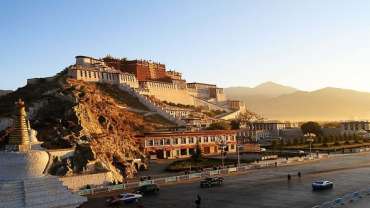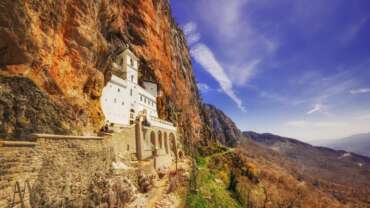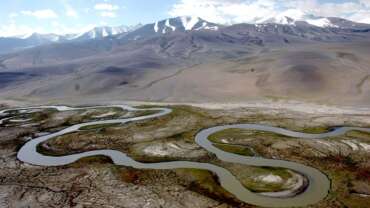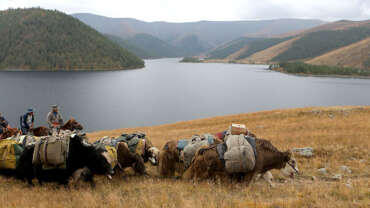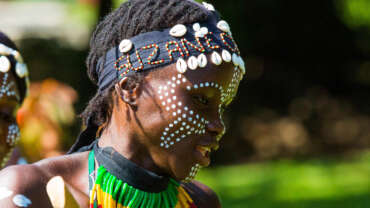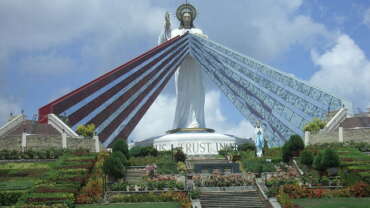Mauritius - The Dream You Can Afford!
Mauritius, an Indian Ocean island nation, is known for its beaches, lagoons and reefs. The mountainous interior includes Black River Gorges National Park, with rainforests, waterfalls, hiking trails and wildlife like the flying fox. Capital Port Louis has sites such as the Champs de Mars horse track, Eureka plantation house and 18th-century Sir Seewoosagur Ramgoolam Botanical Gardens.
Mauritius lies about 500 miles (800 km) east of Madagascar in the Indian Ocean. Its outlying territories are Rodrigues Island, situated about 340 miles (550 km) eastward, the Cargados Carajos Shoals, 250 miles (400 km) northeastward, and the Agalega Islands, 580 miles (930 km) northward from the main island. Mauritius also claims sovereignty over the Chagos Archipelago (including Diego Garcia), some 1,250 miles (2,000 km) to the northeast, although this claim is disputed by Britain.
The island of Mauritius is volcanic in origin and is almost entirely surrounded by coral reefs. The northern part is a plain that rises to a central plateau, varying in elevation from about 900 to 2,400 feet (270 to 730 metres) above sea level. The plateau is bordered by small mountains that may have formed the rim of an ancient volcano; the highest point (2,717 feet [828 metres]) is Piton de la Petite Rivière Noire in the southwest. The two major rivers, the Grand River South East and the Black River, are the primary sources of hydroelectric power. Lake Vacoas, one of the main reservoirs, is the chief source of water.
History of Mauritius
Given the island’s varied history, in Mauritius, there is an abundance of museums and cultural points of interest to visit.
Martello Tower at La Preneuse
The Martello Tower at La Preneuse was built by the British between 1810 and 1846 to protect them against their sworn enemy, the French navy. Since being restored in 1999, the tower is now accessible for guided tours.
Le Morne
As a UNESCO World Heritage site and a commemorative landmark of the harsh slavery period in Mauritius – the mountain of Le Morne is a must see. Protected by isolated wooded and almost inaccessible cliffs, the escaped slaves formed small settlements in the caves and on the summit of Le Morne mountain. Traditions associated with the maroons have made Le Morne a symbol of the slaves’ fight for freedom, their suffering and their sacrifice, all of which have relevance to the countries from which the slaves came – the African mainland, Madagascar, India and South-East Asia.
Eureka “La Maison Créole” Moka
This historical mansion built in 1830 with no less than 109 doors will provide you with a glimpse into the lifestyle of the more affluent Mauritians during the colonial era.
The Folk Museum of Indian Immigration
Aapravasi Ghat (UNESCO World Heritage site)
This museum evokes the influx of coolies who came to work as labourers after the abolition of slavery in Mauritius in 1835. Today their descendants account for two-thirds of the Mauritian population. This well-documented folk museum shows in detail the daily life of Indian workers during the nineteenth century.
National History Museum
A French colonial building from the eighteenth century houses the National History Museum. Old maps, engravings, crockery, pirates’ swords and even fragments of shipwrecks, recount the rich maritime history of the island. The crown jewel of this fascinating museum is the bell recovered from the wreck of the St Géran.
Cavendish Bridge
Constructed in 1856 for sugar cane transportation, Cavendish Bridge, commonly known as the “Pont de la Ville Noire”, literally “the black town bridge”, was originally constructed from wood while all other bridges in Mauritius were made from steel. Between 1908 and 1911 it was transformed into a reinforced concrete bridge, an innovation at that time. At 155 metres it is said to be the longest bridge on the island.
Battery of Devil’s Point
Under the French occupation, 27 defence guns controlled access to the island. The fearsomely effective battery of the Devil’s Point for a long time prevented the English from approaching Grand Port.
The Dutch landing spot
The Dutch were forced to land in Mauritius in 1598 after a violent storm drove them to the shore of the uninhabited island. There is a monument to mark the point of their first landing on the coastal road near Ferney, Mahebourg, in the south-east, with the majestic Lion Mountain in the background. Take a walk over the little bridge and appreciate the view of the little islands off the shore.
People of Mauritius
Ethnic groups, languages, and religion
Approximately two-thirds of the population is of Indo-Pakistani origin, most of whom are descendants of indentured labourers brought to work in the sugar industry during the 19th and early 20th centuries. About one-fourth of the population is Creole (of mixed French and African descent), and there are small numbers of people of Chinese and Franco-Mauritian descent.
Although English is the official language, it is spoken by a very small percentage of the population. Creole, a French-based patois, is spoken by about four-fifths of the population and is the lingua franca of the country. Bhojpuri, an Indo-Aryan language, is spoken by one-tenth of the population, and French is spoken by a small percentage. Other languages spoken on the island include Hindi, Chinese, Marathi, Tamil, Telugu, and Urdu. Mauritians commonly speak two, three, or even more languages, and the educational system supports a wide range of language instruction.
Religious affiliation varies: about half of the population is Hindu, about one-third is Christian (the majority of whom are Roman Catholic), and—with the exception of a small group of Buddhists—the majority of the remainder are Muslims.
Art & Culture of Mauritius
The arts and cultural institutions
Interest in arts and letters and the sciences is promoted by voluntary associations, and the island has produced talented poets and novelists. Perhaps the best-known local writer is Dev Virahsawmy, a poet and playwright. Though he writes easily in both French and English, Virahsawmy is most renowned for his efforts to popularize the use of Creole. In addition to his own plays and poetry, he has also translated several of Shakespeare’s plays into Creole, which have been performed in Mauritius.
Mauritius is known for the séga, a popular folk dance consisting of suggestive movements of the hips and arms to a rhythmic beat. The dance can be traced back to the 18th century, when it was performed by slaves.
Representational and abstract painting flourish, and there are art galleries in the major towns. The major national cultural institutions are the Palace Theatre in Rose Hill, the Port Louis Theatre, the Mauritius Institute, which includes a natural history museum and a historical museum, and the Mauritius Archives. There are both public and institutional libraries.
Also of cultural interest is Aapravasi Ghat, in Port Louis, and Le Morne Cultural Landscape, located on a peninsula on the southwest side of the island; both have been designated UNESCO World Heritage sites. Aapravasi Ghat was used as an immigration depot from 1849–1923 for indentured labourers arriving from India. Le Morne Cultural Landscape, comprising Le Morne Mountain and most of its foothills, was a place of refuge during the 18th and early 19th centuries for many escaped slaves, known as maroons. Another area of cultural significance is Grand Bassin Lake, where Hindus bring offerings during the Maha Shivaratree festival.
Explore Mauritius
An islander once told Mark Twain that “Mauritius was made first and then heaven; and heaven was copied after Mauritius”.
Its miles of palm-fringed sandy beaches, almost entirely encircled by coral reefs, offer sanctuary for those who want to spend days lounging on the beach. The crystal clear waters are perfect for diving, snorkelling, swimming, kayaking and that’s just the beginning.
What makes Mauritius different is that it has so much to offer beyond the beach. Whether it’s skydiving out of a plane, hiking through the mountains and National Parks or soaking up the culture, this is truly a destination with something for everyone.
The islands’ Dutch, French and British legacy is reflected in colonial mansions and botanical gardens, while hospitable locals of African, Indian and Chinese heritage give the island an authentic feel, with colourful markets and temples, fusion cuisine, and the sashaying séga.



